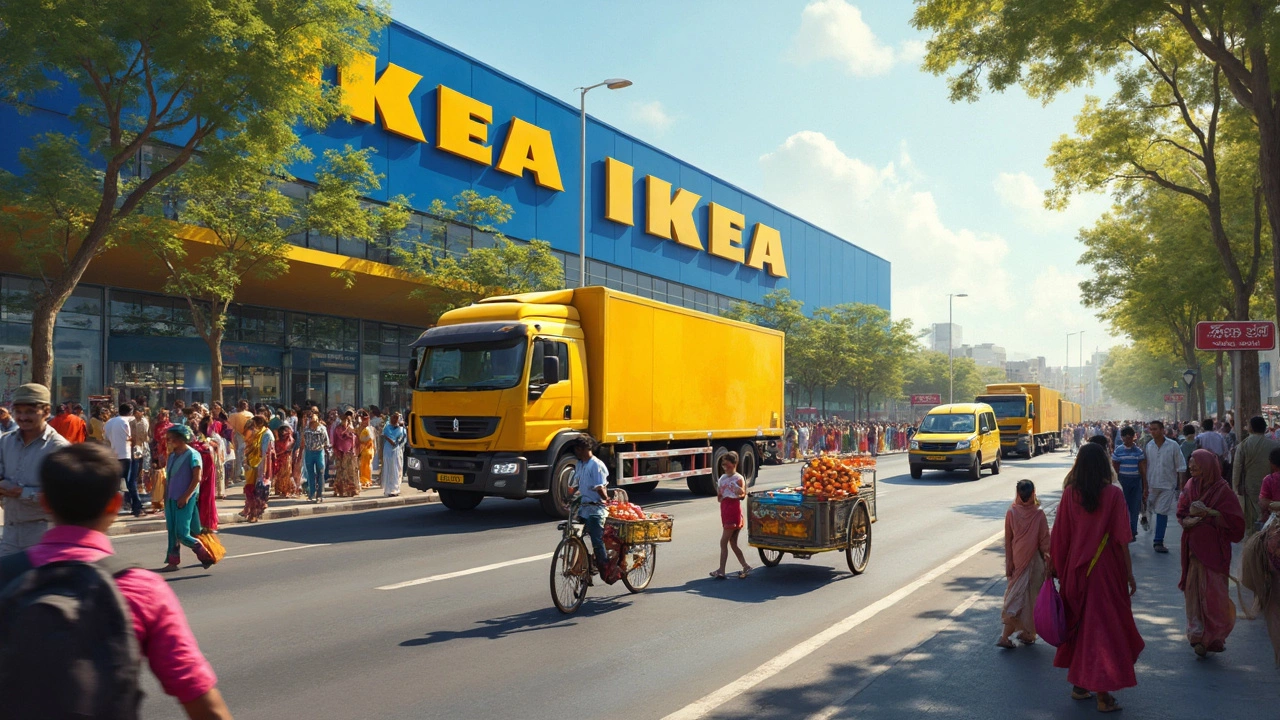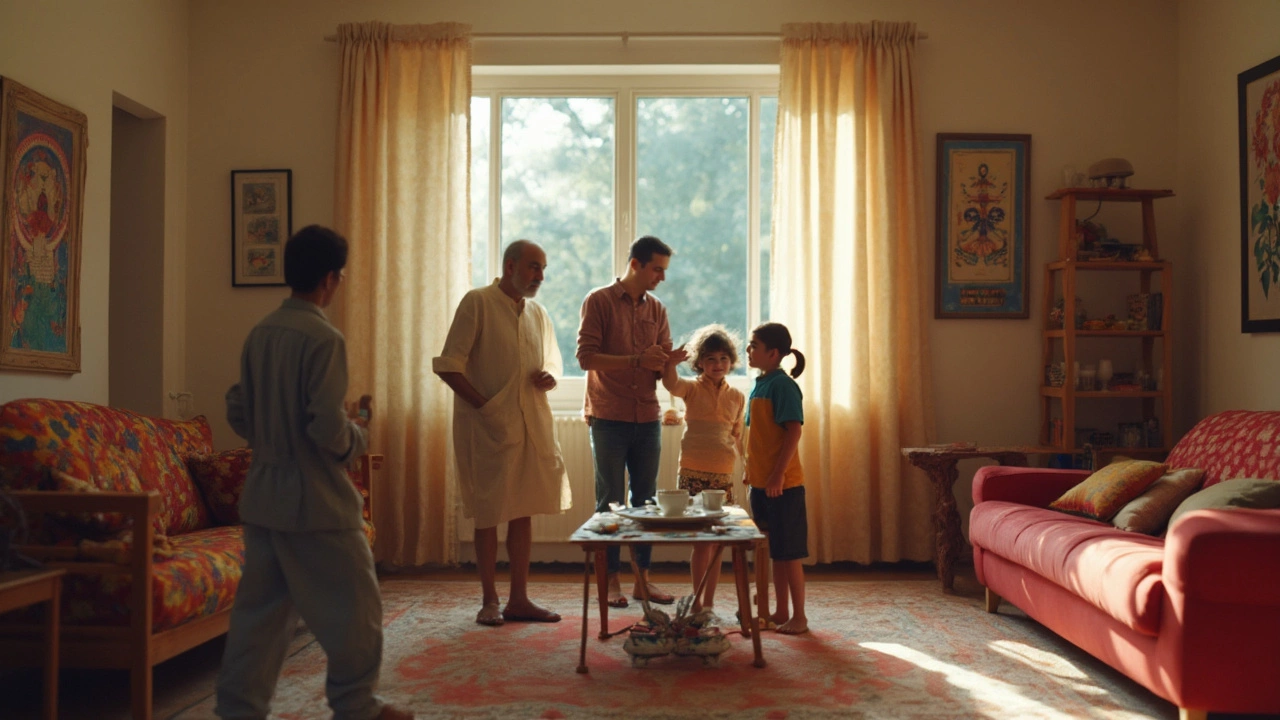Every Indian city seems to have its favorite corner furniture shop—the kind where you show a photo, haggle hard, and get something made from scratch. Walk into an IKEA store, and the experience feels like another planet: huge showrooms, self-service, Swedish meatballs, and furniture with names you can barely pronounce. The question is, do folks here actually want this?
The Indian furniture scene isn’t just huge—it's personal. Most buyers, especially outside the biggest metros, still trust local carpenters and custom-built pieces. They like heavy, solid wood over flat-pack assembly. Price is a big deal, but so is lasting value. IKEA’s idea of buying everything off the shelf and taking it home in a box is still pretty new for most shoppers here.
- Breaking Down India's Furniture Market
- IKEA's Game Plan: What They're Doing Differently
- Why It's Tough: The Roadblocks Ahead
- Does IKEA Even Stand a Chance Here?
Breaking Down India's Furniture Market
India’s furniture market isn’t your typical, one-size-fits-all space. It’s estimated to be worth over $20 billion as of 2025, with about 85% of it still belonging to the unorganized sector. That means most sales happen in local mom-and-pop shops, through small city carpenters, or even roadside stands. The organized, branded segment is catching up, but it’s not even close to dominating—yet.
Tradition still sets the tone. Families want solid wood, sturdy beds, and wardrobes that last decades. The concept of "buy it, use it for a couple of years, and swap it out" isn’t popular outside a few metro cities. Customization is king—people love picking their own colors, finishes, or even asking for a little extra shelf space. Working directly with carpenters lets them get exactly what they want at their price.
Price sensitivity is off the charts. Most folks think twice before dropping serious cash on anything that isn’t built to last. Here’s a quick look at how the numbers stack up:
| Segment | Share of Market | Preferred Buying Method |
|---|---|---|
| Unorganized (Local Shops/Carpenters) | 85% | Custom, On-demand, Negotiation |
| Organized (Brands like Godrej, Pepperfry, Urban Ladder, IKEA) | 15% | Ready-made, Some customization, Fixed pricing |
Online shopping for furniture is growing fast, too. Platforms like Pepperfry and Urban Ladder are making it easier to buy sofas or tables online, but most buyers still want to touch, sit, and test out the piece before paying up. There’s also huge variety in demand—what sells in Bangalore flats is worlds apart from what a family in Lucknow might buy for a big bungalow.
One interesting twist: space is always tight in Indian homes, especially in cities. Modular, space-saving, and multi-use furniture is getting more popular, mostly with younger city people or renters.
IKEA's Game Plan: What They're Doing Differently
IKEA definitely isn’t just copying its European playbook in India. The team has done their homework, and they learned pretty fast that if they wanted to sell Swedish furniture here, things had to be tweaked—big time.
First, they’ve gone all in on local sourcing. About 30% of IKEA products sold in India are actually made in the country. They’re trying to get this number up to 50% in the next few years. Why? Cheaper production costs, fewer import hassles, and it just sounds better—people love the ‘Make in India’ idea. Plus, it helps IKEA meet local government rules for foreign brands.
The menu at IKEA’s India stores also looks nothing like their European cafeterias. Sure, the legendary Swedish meatballs are still there, but they’ve rolled out biryanis, samosas, dal makhani, and even coconut laddoos. These changes might sound small but matter a lot—a whopping 800,000 Indian meals were sold in just the first year, showing that IKEA gets India’s food love language.
Another shift: IKEA isn’t just relying on massive stores in huge cities. They’ve opened smaller urban centers—think Mumbai’s compact store in Worli and their app-based shopping, sometimes paired with ‘click and collect’ points for pick-up. It’s a smoother way for folks who don’t want to drive out to the store’s far-flung outskirts.
Assembly has always been a headache for first-timers. IKEA saw this coming and offers affordable assembly help—no need to puzzle over a booklet and Allen key alone. Want the full set up? You pay for delivery and a team comes over, sets up everything, and cleans up. Way more practical for families who value convenience or don’t have time to DIY.
On pricing, IKEA knows they face a ton of competition from local shops. Indian buyers are price-sensitive, so IKEA adjusted its price points on everyday items to compete with unbranded knockoffs. They also roll out special deals during festival seasons—like Diwali and Dussehra—when most furniture shopping happens anyway. IKEA isn’t just betting on style; they’re betting on fitting into India’s way of shopping, eating, and living.

Why It's Tough: The Roadblocks Ahead
Cracking the Indian market isn’t a cakewalk, even for a global giant like IKEA. One of the biggest headaches? Land and real estate. Setting up those massive blue stores is costly and getting the right location in crowded cities takes ages. It took IKEA nearly a decade to open its first store in Hyderabad because of complicated regulations, strict building codes, and endless paperwork.
Let’s talk about delivery: Indian traffic is a nightmare and home addresses aren’t always clear, especially outside the big metros. Last-mile delivery for that flat-pack wardrobe? Not so simple. On top of that, most folks still expect free assembly or help carrying furniture—not DIY with an allen key and a confusing manual.
There’s also the price challenge. Indian shoppers are value-conscious, and while IKEA tries to keep prices low, local manufacturers sometimes undercut them or offer “customization” for the same price. Plus, traditions run strong. In many families, custom furniture is part of wedding dowries or family legacies—something you can’t just swap for a Billy bookcase.
Another massive hurdle is competition. India has its own furniture stars: Pepperfry, Urban Ladder, HomeTown, and a ton of unorganized small players. All of them know the local taste better, offer quick tweaks, and can often deliver faster. IKEA’s global catalog may look nice, but some items just don’t fit Indian homes—literally. Many apartments are small, so those giant wardrobes and couches can be a tough sell.
Finally, there’s the soft stuff: Indians are used to negotiations, not fixed prices. They want after-sales service, easy returns, and a personal touch. IKEA has to tweak its DNA for all this to impress Indian families who’ve bought furniture the old way for generations.
Does IKEA Even Stand a Chance Here?
The short answer? It’s possible, but India isn’t going to make it easy for IKEA. The Swedish giant has put real money on the table—₹10,500 crore (about $1.3 billion) for expansion as of 2024. Their Hyderabad store pulled in almost 3 million visitors in its first year alone, which shows some real curiosity and even excitement among urban shoppers. But opening doors is one thing. Turning curiosity into repeat business is the real battle.
Here’s where things get real: most Indian furniture buyers still turn to local shops for everything from pooja units to wardrobes, mainly because they love custom furniture and thick teak wood. IKEA offers a different value: affordable prices, modern designs, and a "DIY" mindset that’s still picking up steam here. Add to that, assembling furniture isn’t something every Indian customer has time or patience for—many want a one-and-done purchase, delivered and set up.
Let’s look at some facts on the ground:
| Store | City | Opening Year | Size (sq ft) | First Year Visitors |
|---|---|---|---|---|
| Hyderabad | Hyderabad | 2018 | 400,000 | ~3 million |
| Navi Mumbai | Mumbai | 2020 | 500,000 | Not Published |
| Bangalore | Bangalore | 2022 | 460,000 | Not Published |
These massive stores need crowds, and they’re betting big on younger families in metro cities. IKEA has started home delivery across several urban locations and offers assembly help for a fee, but more than 65% of India’s furniture sales still happen offline and often outside major metro cities.
If you’re looking for a simple takeaway, here’s what’s working for IKEA so far:
- City folks love a clean, modern store where everything is in one place.
- First-time homeowners and renters are open to stylish, affordable options—even if it means learning how to use an Allen key.
- The brand’s focus on sustainability and eco-friendly choices is starting to click with the conscious crowd.
But the hurdles aren’t small. Regional design tastes, price comparison with unbranded local shops, and the country’s crazy traffic (slowing down deliveries) all add up. If IKEA wins India, it’ll be because it mixes its global model with things that truly make sense on the ground. One thing’s for sure: IKEA has everyone’s attention—and nobody, not even the corner shop, is ignoring the ripple it’s making.
